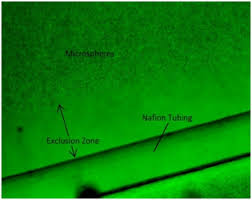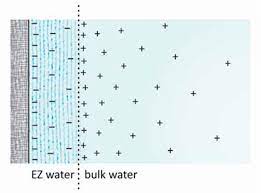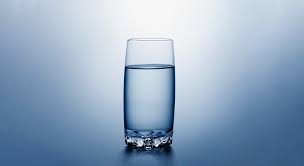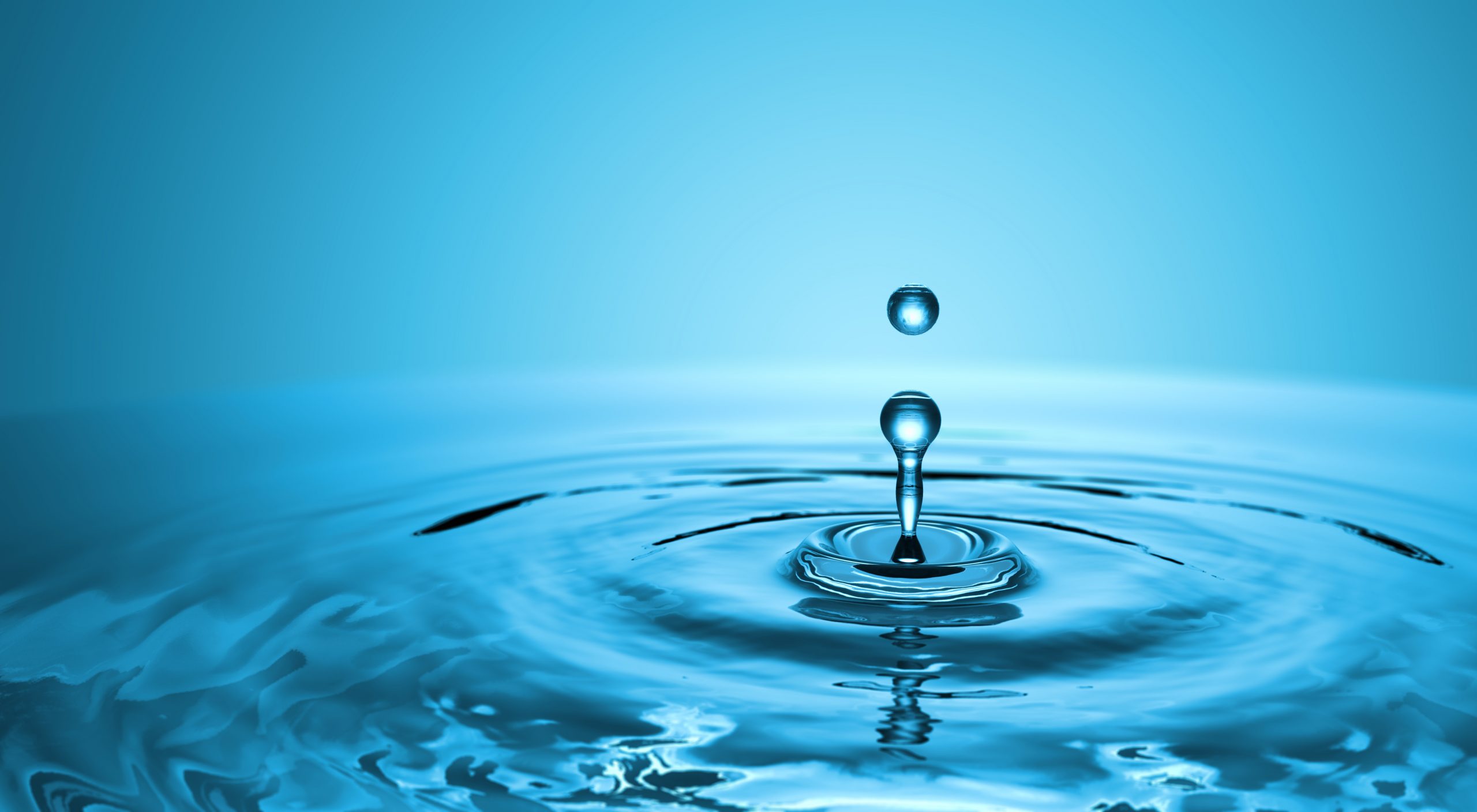The two phases of cellular water are vital to life and all physiologic functions that support it. Current higher-scale medical educational programs still teach a single phase of the water model of cellular biology. We learn in basic science class that water has three phases: liquid, solid, and gas, but for over a hundred years, science has known that the fourth phase of water exists in certain circumstances. In cellular physiology class, we were taught a model of cell structure in which a lipid bilayer kept only liquid water with floating organelles and a nucleosome slushing around. Structure within a cell was maintained by proteins intertwined within the cell, called the cytoskeleton, holding the framework of the cell together. The intracellular environment was controlled by proteins in the cell membrane called pumps and channels. Pumps would keep certain molecules out of the inside of the cell, and channels would allow molecules to flow into the cell. This simplistic model, on the surface, makes a lot of sense. As we dive deeper into understanding how a cell performs many tasks in an energy-efficient manner, issues begin to arise. For example, the energy required to maintain intracellular electrolyte balance by the pumping mechanisms is much too large to reconcile. The requirements energetically would be vast; we know the cell performs this task of electrolyte separation, but the current model is not feasible. The model for intracellular transport has the same issues. How do cells transport proteins around in this liquid medium, import extracellular molecules, and export secretory molecules from within?
Scientists studying the theory of the fourth phase of water have reconciled many of the issues relating to cellular dynamics and energy demands. They call this phase transition cellular mechanics. The cells can utilize the transition of water from the liquid state to the 4th state and vice versa to accomplish an intracellular activity in an energy-efficient manner.
What is the Fourth Phase of Water
Over a hundred years ago, scientists made a discovery about the nature of water that took years to explain. When they dropped a hydrophilic (water-attracting) particle such as Nafion tubing in salt water, a zone of pure wate,r which they later called the exclusion zone would form. The exclusion zone excluded all sodium or chloride ions dissolved in the water. The debate started as to why this occurred. One side believed that it was created by water molecules lining up and stacking like bricks stacking one. The other side argued that the size of the exclusion zone was too large to maintain such a structure. The analogy would be stacking bricks as high as 3 football fields, it would not maintain itself. Well as we can see mainstream science still holds on to the brick theory of the exclusion zone only recognizing 3 phases of water.

The research into the 4th phase of water has revealed many surprises along the way, carving out a new model of cellular physiology not applied by academics in the medical field. One of the first findings about the exclusion zone was charge separation. The exclusion zone was very negatively charged, and the zone between it and bulk liquid water was very positively charged.

If they placed an electrode in the EZ water and another one on the edge of the EZ water, they found that a current of electricity could be tapped. They found this even in pure water. This amazed them to find electricity in the water. Currently, they are researching if this could be used to supply useful energy. This baffled scientists because the separation of charge requires an energy input to the system. The pumps and channels theory in a cell membrane is responsible for creating a separation of charge in the cells, but as we discussed, that would take a large amount of cellular energy to maintain. Water only needs to be in contact with a hydrophilic surface (will break the news to you that proteins are hydrophilic and fats are hydrophobic) to phase transition from liquid water to EZ water with no apparent energy utilization. Something is missing.
As time went on and technology improved, they were able to see what EZ water was composed of. The water molecules would link up in a hexagonal structure as not H2O but H3O2. The honeycomb structure stacked on top of each other made a stable structure that the brick stacking theory could not reconcile. EZ water soon became known as structured water. They still understood it existed, but again, how was the H3O2 being assembled? It would require a reaction that would need energy input.
By accident, researchers discovered the energy source driving the formation of the exclusion zone water. Dr. Gerald Pollack was studying EZ water in his lab, and a student found that shining light on a sample would make the exclusion zone larger. This was the answer to the energy input question, but was it the light or the heat of the light that was causing this to occur? They later found that it was near-infrared wavelengths of light that were exciting the electrons in the water to drive the reaction of H3O2 formation around the hydrophilic surface. Near-infrared energy is everywhere. The sun emits it, and the earth, plants, and creatures absorb and reemit it. Fire emits near infrared and far infrared, the latter being responsible for the warming effects of fire. Hydrothermal vents on the ocean floor emit near-infrared energy. In any place on Earth, water is exposed to hydrophilic substances, and water will structure around them.
Structured Water And Cellular Physiology
Cells have a membrane consisting of a hydrophobic lipid bilayer (discourages structuring of water) with many hydrophilic proteins (encourage structuring of water) that span across the membrane. Inside the cell, along the membrane, proteins form a lattice network around the entire cell. Within the cell, another protein lattice joins all of the organelles and the nucleus together. This network of proteins is encased with structured water, so much so that there is very little unstructured water within a cell. The inside of the cell is a gelatinous matrix. Think of Jello, the consistency is formed by the structuring of water around the collagen in the Jello. Our cells are similar to Jello on the inside.
The cell uses the potential energy of water structuring around proteins to perform work by controlled phase transitions. Phase transitions are when water goes from structured to structured water or vice versa. Phase transitions can occur when the charge of the hydrophilic surface (protein) changes. Our cells employ ATP as the energy to drive phase transitions. ATP is the usable form of energy are cells need to perform all physiologic processes. ATP is produced in the mitochondria (the organelle in the cell) by the breakdown of sugars, proteins, and fats for energy (in the form of ATP). ATP is a highly charged molecule with a strong affinity for attachment to proteins. When a protein has ATP bound, it will be in its extended and most hydrophilic state with structured water surrounding it. If ATP is broken down by enzymatic action, it changes the charge and shape of the protein, inducing a wave of destructuring of water. During this phase transition, ions (potassium, sodium, calcium, chloride) move quickly as structured water breaks down and charges move to binding sites on the protein previously blocked by the structured water. Stored energy within the charged protein and the structured water is now converted into energy to perform tasks within the cell. This can result in proteins such as actin and myosin changing structure to produce muscle contraction. In nerve cells, the ion flux of sodium and potassium at the cell membrane creates an action potential wave down the nerve axon. All intracellular activities, from DNA replication, protein synthesis, transport, and secretion, can be broken down using ATP stored energy to induce phase transition of water and protein folding/unfolding or contracting/lengthening.

Should I Drink Structured Water?
Structured water is the new fad, making people believe that structured water will increase their energy and health. It sounds good, but what are you getting out of it? If you drink water and are exposed to infrared energy, your cells will structure it naturally. So, does it need to be structured before you drink it? All water in a glass will be structured at the surface because it is exposed to charged particles in the air (hydrophilic) and infrared energy. Clouds are small droplets of structured water around dusk, just as raindrops are. The surface tension of water is due to water structuring, which enables lizards and water bugs to walk on water.

What we should do is drink water as nature intended it. Natural water would not be fluoridated, chlorinated, and stored in a dark water tower delivered in copper pipes. It would not be sitting in a toxic plastic bottle to stagnate. Water would be exposed to sunlight and moving in nature. I think the best economical way to drink healthy water is home reverse osmosis filtration or distilling water. To get pure water, you want only H20 with nothing else in it. We recommend that when installing reverse osmosis units, to bypass the re-mineralization stage. Under the sink, units can be purchased for $300-$500 and are easy to maintain. A stovetop water distiller costs $100-$200. This is what I recommend. also buy a couple of 5-gallon glass carboys to keep finished water, then buy a dispenser. Start with pure H2O then add a small amount of Himalayan or plain sea salt to add ions in a clear glass cup. Stir it up well to add that motion to the water and mix in the salt. Let the water then get exposed to direct sunlight or if you have access to a red/near-infrared light that would work. The light will not structure the water to any significant degree but the water will absorb the photon energy exciting the electrons within the ions and water which will then transfer to your body when you drink it.
